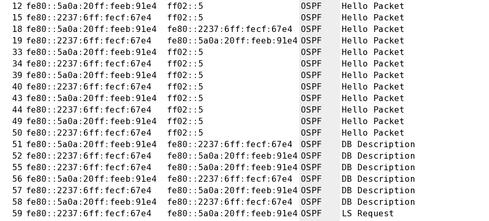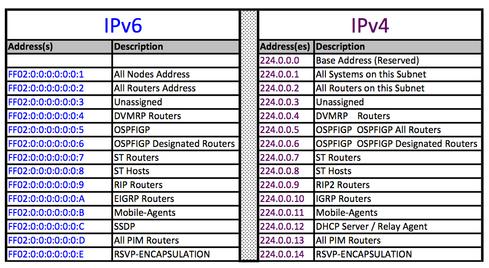For those of you new to IPv6, what I am about to show you is going to look a lot like a magic trick. I’m going to bring up an IPv6 IGP neighbor relationship (OSPFv3) between two routers. This doesn’t sound like a magic trick, I know. But what if I told you I am going to do this without putting any IPv6 addresses into the configurations of either routers?
Like any true magician, I must start my magic act with letting you know I have nothing up my sleeves. So let’s review the facts:
- IPv6 unicast routing is globally enabled on both routers
- IPv6 OSPFv3 is enabled via the one global command, “ipv6 router ospf 6”
- Each router has an interface in an out-of-band management network (OOB mgt.) in the subnet 14.14.14.0/24.
- RouterA is 14.14.14.101 and RouterB is 14.14.14.102 in this OOB management network
- The IPv4 addresses for the OOB management interfaces are the only IP addresses in the configurations
- Gig1/0/1 on both routers only has only two IPv6 commands on it, as shown below
- Router A is monitoring the gig1/0/1 interface and sending the traffic to a Spirent TestCenter port for capture
The interfaces are currently, as I mentioned, administratively shut down. So why look at the output to show int gig1/0/1 on Router A? Hint, hint: The MAC address of Router A is highlighted.
Let’s “no shut” both Router A’s interface and Router B’s interface. Wave the magic wand and say a few magic words and….
VOILA! OSPFv3 neighbor!
Can you guess?
How did I do that? Let’s take a step backward for a second and think about all the clues I’ve given you thus far.
In my previous blog, I raised a question that might have been posed during the development of IPv6 (IPng at the time):
“IPng addressing on local links: Why use up precious IPng addresses supporting routing protocols on a local segment just for the purpose of routers talking to each other? They are just communicating on that local segment.”
It's a good question and one I definitely imagine was asked. With the concern about the exhaustion of IPv4 addresses, I can imagine address conservation techniques might have been forefront in people's minds. Why, then, burn up an IPng address on the link between RouterA and RouterB just to have OSPF neighbors come up?
What are the other clues I have given you?
- In the diagram above, I show the MAC addresses of both Router A's interface and Router B's interface
- I'm highlighting the MAC address in the show interface gig1/0/1 output for RouterA.
Sniffer trace
Let's look at the sniffer trace we caught and focus just on the OSPF.
Lots of FE80:: and FF02::5 stuff, eh? These are all part of the magic trick.
It may look messy and intimidating to read, but it is really just three numbers repeating again and again in our trace, all of which are actually IPv6 addresses critical to making the magic trick work:
- FF02::5
- FE80::5A0A:20FF:FEEB:91E4
- FE80::2237:06FF:FECF:67E4
Examining FF02::5
First, let's take a closer look at the one that stands out a little easier and is a little less intimidating – FF02::5.
Does that "::5" at the end of "FF02::5" remind you of anything? How about the clue that FF02::5 is only a destination IP address and never a source? Anything? Would it remind you of anything if I mentioned the IPv4 address 224.0.0.5?
Let's go to this IANA page, plus this other IANA page and merge together some information from the two.
Mystery solved for FF02::5! It is the IPv6 multicast address equivalent to 224.0.0.5: OSPF.
NEXT Page: A closer look at FE80::















